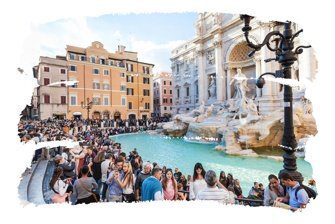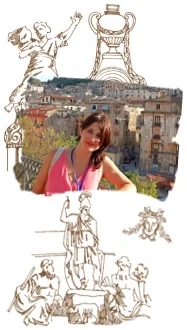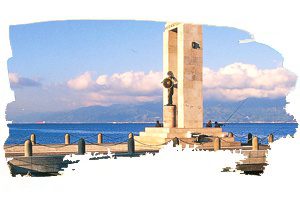What are the ten must-see locations in the Aosta Valley?
The Aosta Valley is located in the northern part of Italy, bordering France and Switzerland, it is a predominantly mountainous region that contains the highest peaks in Europe, such as the Mont Blanc, the Matterhorn, the Mount Rosa and the Gran Paradiso. This region offers a view of incomparable beauty, giving its visitors corners of nature that you will only find in this part of Italy. Anyway, what are the ten must-see locations in the Aosta Valley? Here at Your Travel to Italy with Ana Patricia you make the trip of your dreams !!! ALSO: see our “Accommodation in Italy – Tips for your holidays!”
Aosta Valley by Drone!
https://www.youtube.com/watch?v=svz-2RUL3rk
(Source: MARTA TRAVEL)
Our Introduction
The Aosta Valley is a small but spectacular region, where there will be endless mountain ranges, immense valleys and magical ancient villages to delight your eyes; you will also find curiosities and traditions from the past to be discovered. Would you like to know Where to ski? I know click here! In this text, you will see the ten must-see places for you to spend your vacation in this wonderful place. I guarantee you will not regret it! How about a Private Half-Day Tour to Aosta Castles?
1) What are the ten must-see locations in Aosta Valley? AOSTA CAPITAL
We start this trip in its regional capital, Aosta, located in the northwest of Italy, a charming and elegant Roman city, one of the few in Europe capable of combining cultural and skiing. Located in the middle of important mountains and on the plain, where the Dora Baltea River flows, Aosta has many remains of Roman origin, such as the theater, the amphitheater and the bridge, with it also worth visiting the Cathedral, the Arch of Augustus and Jocteau Castle. In addition to the beautiful landscape that surrounds these scenes, Aosta’s city center is splendid, rich in history and art. Find out here HOW MANY DAYS DO I NEED TO VISIT ITALY ?
Historical monuments
Among the historical monuments of Aosta, a must visit is the Arch of Augustus (a monument erected to witness the Roman victory over the Salassos), the ancient Porta Pretoria, the Roman Theater and the ancient city walls. The walls house several towers such as the Lebbroso Tower and the Bramafan Tower, as well as the Fromage Tower and the Paileron Tower, all buildings from the Roman era. From medieval times, there are the Cathedral of St Mary of the Assumption, St. John the Baptist and the Collegiate Church of St. Peter and Sant’Orso. Other important religious buildings are the Church of Holy Cross and the Church of St Stephen.
2) What are the ten must-see locations in the Aosta Valley? COURMAYEUR
A town at the foot of Mont Blanc to see is Courmayeur, a popular winter resort, which is also popular in summer. Throughout the year this beautiful city reaches tens of thousands of visitors, with crowded accommodations, restaurants and popular ski resorts. Click below for Tips on Courmayeur!
The Tourism
Courmayeur lives off tourism and is a sure destination, very popular with skiers and entertainment celebrities. The snowy slopes are the main tourist attractions, although the Center of interest remains Via Roma, where the most important restaurants, international big name shops, entertainment venues and VIP residences are located. Classic alpine houses and wooden houses leaning on the slopes, overlooking the ski slopes, characterize the historic center of Courmayeur.
3) What are the ten must-see locations in the Aosta Valley? MONT BLANC
Visiting Courmayeur, you cannot miss the crossing of Mont Blanc, with its 4,810 meters high, being the highest in Europe. Even if you are not a climber, you can still visit it via the cable car from La Palud, near Courmayeur. At each stop the panorama offers dominant landscapes that offer panoramic views that are hard to forget.
4) What are the ten must-see locations in the Aosta Valley? COGNE VALLEY
In the heart of the ‘Gran Paradiso National Park’ you can admire the Cogne Valley, which takes its name from the enchanting city. Here is the ‘Paradisia’ botanical garden with the display of typical alpine flora. Tourism in this area is mainly concentrated in the Cogne area.
Its Attractions
This city, with its typical wooden houses and vast expanses of green fields, is home to several monuments of great architectural importance. Here you can, in fact, admire the Mother Church of Sant’Orso, the Chevril Bridge, which is on the Grand Eyvia river, and the small villages of miners in areas explored for the extraction of magnetite.
After these beautiful valleys lie the famous Lillaz waterfalls; waterfalls that change with the seasons, until they freeze in winter and that are composed of three levels and easily admired thanks to the simple paths they follow. The Lillaz waterfalls in Cogne are among the most visited spots in the Gran Paradiso National Park. I advise everyone to go to the lower viewpoint to enjoy the extraordinary spectacle of this body of water full of foam that breaks on the rocks. They are much admired by tourists and have a very photogenic appearance that changes during the different seasons of the year and turns to ice in winter.
5) What are the ten must-see locations in the Aosta Valley? CHAMPOLUC
Now we go to the most important center of the Valley of Ayas, Champoluc, which is a village dominated by Crest, a large plateau that, for many, is an unavoidable tourist destination. The city is crowded in winter because it is part of the Monterosa Ski ski resort, while in summer it is appreciated for its wellness center and other tourist and natural attractions. Here it is obligatory to mention the ‘Sabots’, typical handmade clogs, using the typical wood that is also used by residents in all seasons of the year for its exceptional ability to keep your feet warm and dry. WHAT TO DO IN ITALY IN 15 DAYS?
6) What are the ten must-see locations in the Aosta Valley? FÉNIS
When you think of Aosta Valley, what immediately comes to mind are its high peaks, ski slopes and long walks. The Aosta Valley is certainly rich in all of this, but it also has a great historical and cultural heritage, where one of the main attractions is its many castles. Probably the most famous castle is the Castle of Fénis, well preserved and characterized by a multitude of crenellated towers, located in the municipality of the same name, “Fénis”, which sits on top of a hill.
Challant Family and the Castle
This manor house is a true masterpiece of medieval architecture, ancient and impressive center of feudal power of the Challant family, placed between Chambave and Nus. It presents itself in all its beauty on the left side of the road and is comfortable and imposing on a hill surrounded by magnificent meadows and vineyards. This castle was conceived as a large representative office of the greatest exponents of the ancient and noble family of Aosta Valley, the Challant, who endowed it with a great defensive system as well as elegant pictorial decorations to enhance their own power and prestige.
Today the building is owned by the Aosta Valley region, and has been designated as the headquarters of the Aosta Furniture Museum. It is possible to visit the Castle of Fénis following a path that runs through the building, which is offered every day following a certain calendar.
7) What are the ten must-see locations in the Aosta Valley? BREUIL-CERVINIA
Among the most beautiful mountains in the world, there is the Matterhorn, a rock pyramid that sits alongside a handful of small villages, among which there is one of the pearls of world tourism, the city of Breuil-Cervinia. The heart of a magnificent peaked amphitheater, embellished by the silhouette of the Matterhorn, Breuil is among the most exclusive destinations in the Alps.
Largest Summer Ski Resort in Europe
From Breuil-Cervinia, in about half an hour, thanks to a comfortable and scenic cable car, you can reach the Planalto Rosa, the biggest summer ski resort in Europe, a true paradise of permanent ice and snow for skiers, who can’t renounce the slopes even in August. Breuil-Cervinia began to develop as a tourist destination in the 19th century. The development of the resort, appreciated both in winter and summer, continues today, with more modern, cozy hotels that have spa and wellness centers, in addition to fast elevators, public sports facilities, bike paths and mountain walking trails for those who want to go across them on foot.
8) What are the ten must-see locations in Aosta Valley? SAINT VINCENT
Another destination worth visiting is Saint Vincent, which is located in the heart of the Aosta Valley. Known until 1945 as San Vincenzo della Fonte, it is a city with about 5,000 inhabitants, the second most important and populated in the region, as well as being famous for its beautiful landscapes and its casino. In this eastern part of Aosta, the Romans built Via delle Gallie, a consular road that dates back to the colonization period of the Alpine Empire. There are several testimonies from the medieval era, as well as some religious buildings, such as the parish church and the remains of fortifications dating back to the 12th century. Very charming is the historic center characterized by the ‘Rascards’, typical wooden and stone houses from the Aosta Valley, built in the city in 1600.
9) What are the ten must-see locations in the Aosta Valley? CHÂTILLON
In Aosta Valley, there is one of the most beautiful villages, hosted in a wide and luminous valley, which is immediately revealed with its castles surrounded by centuries-old parks, its church, its palaces decorated with precious doors and wrought iron railings, its bridges, its hidden villages, towers and more villages scattered along the slopes of Mount Zerbion and Mount Barbeston. We are talking about Châtillon. The city dates back to the 13th century, contains a group of houses from the 16th and 17th centuries and a series of well-preserved medieval towers still visible, as well as beautiful places that convey a lot of peace and relaxation. In this wonderful place, you can admire the three castles that stand out in the Châtillon landscape.
The Castles
In addition to the aforementioned Challant Castle, there is also the Baron Gamba Castle, surrounded by a large park, home of the Regional Art Gallery and the Ussel Castle, built by Ebalo of Challant in 1350, carefully restored and now used for temporary exhibitions in the months of summer. Interesting is also the Museum of Sacred Art, which houses antique furniture and artifacts from the Aosta Valley.
La Thuile
La Thuile is part of an international ski area, linked to the resort of La Rosière in Savoie, with an incredible succession of views, with its 160 kilometers of trails that meet the needs of every type of skier; the high altitude of the slopes also allows skiing until late spring. In summer, La Thuile is the starting point for ascents to the Rutor glacier, or for easier hikes in the region of Lake Arpy, Rutor and the beautiful Joux plateau.
10) What are the ten must-see locations in the Aosta Valley? LA THUILE
The last place to be seen is La Thuile, which is a small town in the westernmost part of the Aosta Valley. The territory of this area is dominated by Little St Bernard Pass, where you can see a stone wall that serves as an unusual border, known as ‘cromlech’, a megalithic monument dating back to the Iron Age. The remains of two ‘Mansiones’ from the Roman period are still visible in the region, demonstrating the importance of La Thuile as a stopover on the way to Gaul. France is just a few kilometers after Little St Bernard Pass, and is a vital transit point between the mountains that has been a spectator of the passage of numerous civilizations and cultures since the pre-Celtic era. The village of La Thuile, however, dates back to the Roman conquest, when the consular road to Gaul ran across the Aosta Valley and reached the border areas.
Watch this video and learn: 10 cities to visit in Italy
Subscribe to our channel and receive more videos with information and tips about Italy. Don’t forget to leave that Like;)
Conclusion
What are the ten must-see locations in the Aosta Valley? This region offers a view of incomparable beauty, giving its visitors corners of nature that you can only find in this part of Italy. History, art and culture make the Aosta Valley an autonomous region with a great heritage that has a lot to tell.
Are you insecure?
If you feel insecure or have no time, and need help to organize your trip, do not hesitate to look for me! I will love to help you make your dream trip to Italy. And how can I do that? Continue reading this post until the end and you will understand how can we make your life and journey easier.
Did my post help you? If yes, make sure to leave your comment below, but if you still have questions, just leave them as a comment below and I will reply, OK?
[/ sc]
An Extra Help for your Trip The best content from Your Travel to Italy! Learn more about our tours in Italy right now! Best regards from Italy






 Save money!
Save money!